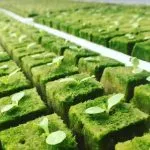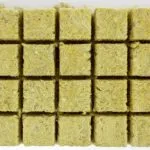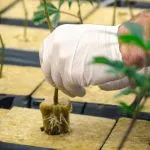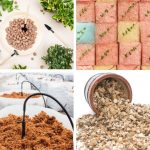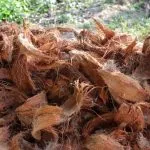Rockwool has emerged as a popular growing medium in hydroponics. As an inorganic material made from recycled slag and basalt rock, Rockwool is compact and perfect for hydroponic systems due to its ability to not absorb water. It has become a top choice for both commercial hydroponic growers and home gardeners alike.
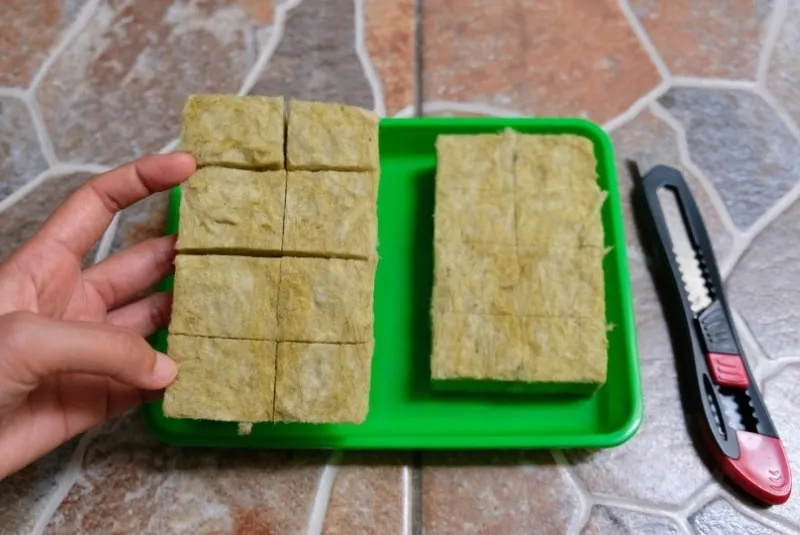
When using Rockwool in hydroponics, you will begin by sprouting seedlings in small cubes before transferring them to larger blocks or systems made of even more Rockwool. This medium is ideal for a variety of plants, including flowers, which are commonly grown in Rockwool. As a cost-effective, space-saving, and highly beneficial growing medium, Rockwool is an excellent choice to help you succeed in your hydroponic gardening endeavors.
This article will guide you through the process of how to use Rockwool in hydroponics, offering tips and techniques to ensure optimal plant growth. Whether you are a seasoned hydroponic gardener or just starting out, incorporating Rockwool into your system can significantly enhance your gardening experience and yield impressive results.
- What Is Rockwool?
- Types Of Hydroponic Rockwool
- How To Prepare Rockwool For Hydroponics
- How to Use Rockwool Cubes for Seeding And Planting
- Adjusting PH And Nutrients
- Watering And Aeration
- Benefits Of Rockwool In Hydroponics
- Can Rockwool Insulation Be Used For Hydroponics?
- Common Crops In Rockwool Hydroponics
- Potential Issues And Solutions
- Can Rockwool Be Reused?
- Frequently Asked Questions
What Is Rockwool?
Rockwool is a versatile growing medium that is widely used in hydroponic systems. It is made from basalt, a volcanic rock, which is melted and spun into fibers. These fibers form a porous, lightweight, and inert substance that is excellent for growing various plants.
As you may already know, rockwool was initially developed as an insulation material. Its natural heat-resistant properties make it an effective insulator for homes and buildings. However, over time, it was discovered that rockwool’s unique properties are also valuable in hydroponic gardening.
One of the reasons rockwool is so popular for hydroponics is that it is completely inorganic, unlike some other growing media. This means it is less likely to harbor pests or diseases, making it a safe and clean choice for your plants. Additionally, rockwool’s porous structure allows for excellent oxygen and water retention, providing an optimal environment for your plant’s roots to grow and thrive.
Finally, it’s essential to mention that rockwool is a sustainable choice for your hydroponic system. It is made from natural materials, such as lava and basalt, which are abundant and eco-friendly. While it has some similarities to asbestos in terms of its fibrous structure, rockwool is considered safer and is not linked to the severe health concerns associated with asbestos.
So, now that you know a little more about rockwool, you can confidently incorporate it into your hydroponic system to support the healthy growth of your plants. Just remember to handle it with care and soak the cubes before use to obtain the best results.
Related: There are some drawbacks to using rockwool so if you want some options, here are some alternatives to rockwool for hydroponics.
Types Of Hydroponic Rockwool
Cubes And Blocks
There are two common forms of Rockwool for hydroponics: cubes and blocks. Cubes come in various sizes and are perfect for starting seedlings or propagating cuttings. They’re also known as starter plugs due to their small size (around 1-inch cubes). As the plants grow, you can transfer these cubes into blocks which are larger, providing ample space for roots to develop. Rockwool blocks come in various sizes and are often used for growing larger plants. They can be used alone or fit into slabs for added support.
What size of Rockwool cubes should you use? Find out here!

To use Rockwool cubes, first pre-soak them in a nutrient-rich solution. This ensures the cubes are saturated before placing seeds or cuttings into the small hole at the top. Monitor and maintain the moisture by keeping the cubes slightly damp but not soaked. Transplant the seedlings into larger blocks once the roots appear through the bottom of the cube. You can even plant the Rockwool cubes in soil without removing the seedlings.
Slabs And Mats
For larger hydroponic systems, slabs and mats made of Rockwool can be a fantastic option. These formats provide a stable and continuous growing medium for plants with extensive roots, such as tomatoes or cucumbers.
Slabs come in various sizes, usually 36 to 40 inches long, 6 to 8 inches wide, and 3 inches thick. To use Rockwool slabs, position your plants evenly on the surface, allowing enough space for each plant’s root system to expand. Secure them by wrapping twine or a similar material around the base of the plant and the slab.
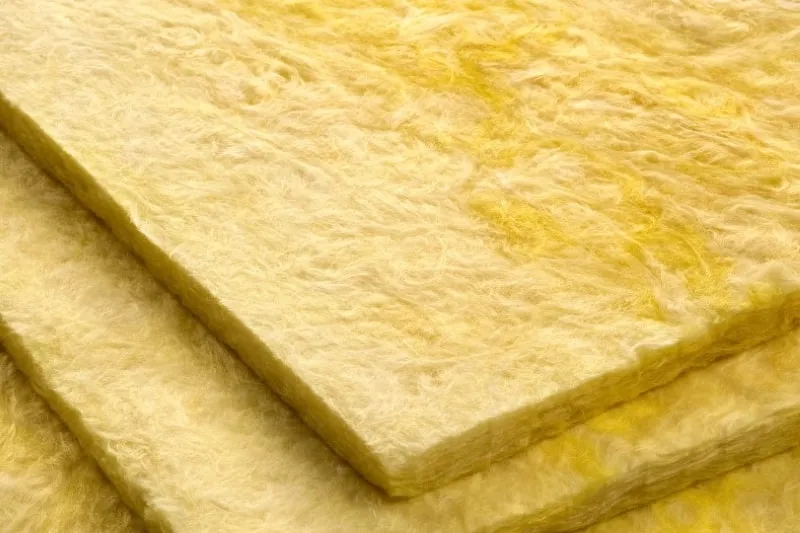
Mats, on the other hand, can be customized to fit your specific growing needs. They’re typically used as a base layer in nutrient film technique (NFT) systems. To use a Rockwool mat, simply cut it to the size of your grow tray and place it at the bottom. With slabs and mats, it’s essential to monitor water and nutrient distribution to ensure even absorption and availability for the plants.
Remember to pre-soak slabs and mats as you would with cubes and blocks, making sure the nutrient solution reaches all parts of the Rockwool. Throughout the growing process, maintain proper moisture levels and provide nutrients as needed to optimize your plants’ growth.
Loose Rockwool
Granulated Rockwool: This type is crumbled into small pieces and has a texture similar to potting soil. It’s often used as a soil substitute in pot-based hydroponic systems.
Flocking: Flocking is a form of Rockwool that comes in loose fibers rather than in pre-shaped cubes or slabs. It’s often used to fill small gaps in hydroponic systems or as a top layer to prevent algae growth.
Each type of Rockwool has its specific applications and benefits, and the choice depends on the type of plants being grown and the specific requirements of the hydroponic system.
Related: Ready to buy this grow medium for your plants? Choose from our picks for the best Rockwool for hydroponics.
How To Prepare Rockwool For Hydroponics
Pre-Soaking
Before using Rockwool in your hydroponic system, it’s essential to pre-soak the material. This step is crucial because Rockwool tends to have a high pH level that can harm your plants. To pre-soak Rockwool, follow these steps:
- Fill a container with water and adjust the pH to around 5.5-6.0. This pH range is ideal for most plants in a hydroponic setup.
- Soak the Rockwool in the prepared water for at least an hour, ensuring it’s completely submerged. This process helps the material retain moisture, providing an optimal environment for your plants’ roots.
- After soaking rockwool cubes, gently squeeze any excess water from the Rockwool. Be careful not to compress the material too much, as this may damage its structure.
Safety Precautions
When handling Rockwool, it’s important to take appropriate safety precautions to protect yourself and maintain the material’s integrity. Here are some tips to follow:
- Wear gloves: Handling Rockwool with bare hands can cause skin irritation. Wear gloves to protect your hands and avoid any discomfort.
- Avoid direct contact with eyes and nose: Small fibers from the Rockwool may become airborne and cause irritation to your eyes and respiratory system. Wear safety goggles and a dust mask to minimize this risk.
- Handle with care: Be gentle when handling Rockwool, as excessive force may damage its structure and reduce its effectiveness as a growing medium.
By taking these safety precautions and properly preparing Rockwool cubes, you’ll create a suitable environment for your plants to thrive in a hydroponic system.
How to Use Rockwool Cubes for Seeding And Planting
Germinating Seeds
Once you have soaked and squeezed the excess water out of the Rockwool cubes, place your seeds in the pre-cut holes of them. Typically, one seed per cube works best for most plants. Make sure the seeds have good contact with the Rockwool fibers, as this aids in uniform growth.
After planting the seeds, maintain consistent temperature and humidity levels to promote germination. Your seeds should be kept in a warm, well-ventilated area, with a temperature range of 65-75°F (18-24°C), ideal for most plants. Keep the cubes moistened but not overly saturated to prevent seeds from rotting. We have an in-depth guide on starting seeds in hydroponics.
Transplanting Seedlings
Once your seeds have germinated and developed their first set of true leaves, they are ready to be transplanted. To do this, carefully transfer your seedlings, still in their Rockwool cubes, into a larger Rockwool block or transplant the seedlings into your hydroponic growing system.
Make sure to handle your seedlings gently to avoid damaging their delicate roots. Place the small Rockwool cubes with the seedlings into the larger blocks or growing containers. Ensure the cubes are securely seated and aligned with the overall hydroponic system to create a seamless transition for the seedling’s root system.
Finally, maintain proper nutrient, temperature, and humidity levels while continuing to monitor the growth of your seedlings. By following these steps, you’ll be well on your way to enjoying a successful hydroponic garden using Rockwool as your growing medium.
Adjusting PH And Nutrients
Importance Of PH Levels
PH levels play a crucial role in hydroponic systems, particularly when using Rockwool. A solution with a pH below 7 is considered acidic, while a pH above 7 is considered basic or alkaline. A pH of 7 is neutral. The pH of your nutrient solution can directly affect your plants’ ability to absorb essential nutrients. For optimal plant growth, it’s essential to maintain a pH range of 5.5-6.5 when using Rockwool.
Before planting your seeds or cuttings in Rockwool, it is important to pre-soak the medium in water with a pH of 5.5-6.5. This will help reduce the pH level and make it easier for your plants to absorb nutrients.
Maintaining Nutrient Balance
Nutrient balance is another critical aspect of using Rockwool for hydroponics. Since pre-soaked Rockwool is pH-balanced, it allows easy absorption of nutrients by plants when combined with a nutrient-rich water solution.
In order to maintain a proper nutrient balance, consider the following points:
- Aeration: Ensure that there is adequate airflow in your hydroponic garden. The porous nature of Rockwool allows for excellent oxygen retention and penetration, which promotes healthy root growth.
- Regular Monitoring: Check your nutrient solution’s pH levels regularly, as they may fluctuate due to evaporation or plant uptake. Make any necessary adjustments to prevent nutrient lockout.
- Nutrient Ratios: Adhere to the recommended nutrient ratios for your specific plants. Different plants require different nutrient ratios for optimal growth.
- Reservoir Changes: It’s essential to change your reservoir’s nutrient solution every two to three weeks to maintain overall nutrient balance. This practice ensures that your plants consistently receive fresh, balanced nutrients.
Watering And Aeration
Moisture Levels And Overwatering
When using Rockwool for growing plants, it’s important to maintain proper moisture levels. Rockwool has excellent water retention, which means it can absorb water like a sponge. This characteristic is beneficial for hydroponic plants that require a lot of water. However, be careful not to overwater your plants. Overwatering can lead to root rot and other issues that may affect your plants’ growth.
To prevent overwatering, monitor the humidity levels in your growing area, and adjust watering schedules accordingly. Use pH-balanced water with a pH level of 5.5 to 6.5 for optimal plant growth. Keep in mind that the type of plant and its growth stage will also determine the moisture requirements.
Oxygen And Root Health
Aeration is another key consideration when using Rockwool in hydroponics. Providing sufficient oxygen to plant roots is crucial for their overall health and growth. The good news is that Rockwool allows for proper airflow through the top while absorbing water from the bottom.
However, you should still ensure there’s adequate oxygen supply to the roots. One way to achieve this is by not packing the Rockwool too densely. Leaving some space in the growing medium allows for better airflow, which in turn provides more oxygen to the plant roots.
Benefits Of Rockwool In Hydroponics
Inert And Sterile
One of the key benefits of using rockwool in your hydroponic system is its inert and sterile nature. Being inert means that it doesn’t contain any nutrients or elements that could affect your plants’ growth negatively. This allows you to have complete control over the nutrient balance in your hydroponic system. The sterile aspect of rockwool ensures that there are no harmful microbes or pathogens present, which can be detrimental to your plants’ health.
Reusable And Sustainable
Another advantage of rockwool is that it’s reusable and sustainable. After a growing cycle, you can clean and sterilize your used rockwool before reusing it for another batch of plants. Doing so reduces waste and makes your hydroponic system more environmentally friendly. Furthermore, using rockwool instead of soil reduces the need for traditional agricultural practices that can contribute to soil erosion and degradation.
Overall, rockwool offers numerous benefits to hydroponic systems. By being inert and sterile, it helps maintain a balanced and healthy growing environment for your plants. And, at the same time, its reusable and sustainable nature helps keep your system environmentally friendly. These factors make rockwool an excellent choice for hydroponic gardeners looking to maximize their plant growth and success.
Can Rockwool Insulation Be Used For Hydroponics?
Yes, Rockwool insulation can be used as an alternative to Rockwool cubes in hydroponics. Rockwool insulation can be cut into smaller pieces or shaped into cubes to serve as a growing medium for plants in hydroponic systems. It provides similar benefits, such as good water retention and aeration for the roots of the plants. However, it’s important to note that Rockwool insulation will need to be prepared and pH balanced before use in hydroponics, just like Rockwool cubes.
Common Crops In Rockwool Hydroponics
Vegetables and Fruits
Rockwool is a versatile growing medium for hydroponic systems, making it a popular choice for growing various types of vegetables and fruits. Some of the most common crops grown in Rockwool hydroponics include lettuce, tomatoes, cucumbers, and peppers. These plants thrive in the moist and stable environment that Rockwool provides, allowing for optimal growth and high yields.
When growing these crops in Rockwool, be sure to:
- Pre-soak the Rockwool in a nutrient solution for 24 hours before planting seeds or seedlings.
- Regularly monitor the pH and nutrient levels to ensure optimal plant growth.
- Keep the Rockwool moist at all times, as it dries out quickly.
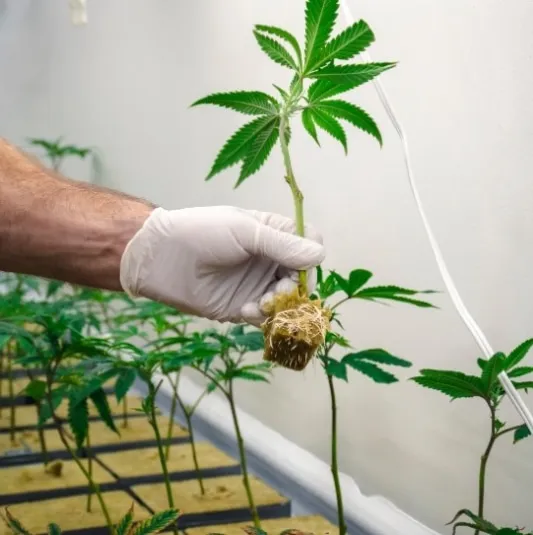
Flowers and Herbs
Flowers and herbs can also be successfully grown in Rockwool hydroponic systems. The porous structure of Rockwool promotes efficient nutrient uptake, and its moisture-retaining properties provide a suitable environment for delicate roots to develop.
Some popular flowers and herbs to grow in Rockwool include:
- Basil
- Chives
- Marigolds
- Petunias
- Lavender
- Mint
To ensure successful growth of your flowers and herbs in Rockwool, follow these tips:
- Soak the Rockwool in a nutrient solution specifically tailored for flowers or herbs before planting.
- Adjust the pH levels as needed for the specific type of flower or herb that you are growing.
- Provide an adequate light source, as some flowers and herbs may require more sunlight than typical hydroponic crops.
By following the guidelines above and selecting the right crops for your Rockwool hydroponic system, you can enjoy an abundance of fresh produce and fragrant flowers throughout the growing season. Remember to monitor and adjust the growing conditions as needed to ensure the health and well-being of your plants.
Potential Issues And Solutions
Growing plants using Rockwool for hydroponics can sometimes come with challenges. In this section, we will discuss two common issues you may encounter and offer possible solutions to keep your plants healthy and thriving.
Root Rot And Bacteria
One potential issue when using Rockwool in hydroponics is root rot caused by bacteria, fungi, and other harmful microorganisms. These pathogens can thrive in the moist conditions that Rockwool cubes present. To minimize the risk of root rot and bacterial infections:
- Ensure proper air circulation around your plants to prevent stagnant humidity.
- Monitor water temperature, keeping it between 68°F (20°C) and 72°F (22°C) to inhibit bacterial growth.
- Use a water treatment system, such as UV sterilizers, to remove harmful pathogens from your nutrient solution.
- Regularly clean and sanitize your hydroponic system and tools to prevent contamination.
Managing PH And Nutrient Imbalance
Rockwool tends to have a naturally high pH level (around 7.8), which can cause nutrient imbalances in your hydroponic system. Adjusting the pH of your nutrient solution is crucial to maintaining the health of your plants. To manage pH and nutrient imbalances in a Rockwool-based hydroponic setup:
- Pre-soak your Rockwool cubes before planting your seeds or seedlings. Soak the cubes in a nutrient solution with a pH level between 5.5 and 6.5 for at least 24 hours. This will help to lower the Rockwool’s pH and promote better nutrient absorption by your plants.
- Regularly test the pH level of your nutrient solution. Monitor the pH level to ensure it remains within the optimal range of 5.5 to 6.5 for most plants. Adjust the pH, if necessary, by using pH up/down products.
- Avoid over-fertilizing your plants. It’s essential to use the appropriate concentration of nutrients for your specific plants. Over-fertilizing can cause nutrient imbalances, leading to plant stress and, potentially, root burn. Follow the guidelines provided by nutrient manufacturers, and keep a close eye on your plants for any signs of nutrient toxicity or deficiency.
By addressing these potential issues and solutions, you’ll be well on your way to successfully using Rockwool in your hydroponic growing system.
Can Rockwool Be Reused?
One of the advantages of Rockwool is that it can be reused, making it an eco-friendly option. When Rockwool is no longer needed in its original application, it can be repurposed or recycled. Here are some ways in which rockwool can be reused:
- Garden and Hydroponics: After using Rockwool for growing plants, it can be cleaned and sterilized for reuse in future gardening projects.
- Horticulture: Reused rockwool can be incorporated into soil mixes for horticultural purposes. It helps improve drainage and retains moisture, promoting healthy plant growth.
It is important to note that some regions may have specific regulations regarding the reuse and disposal of rockwool, so it’s advisable to check local guidelines.
By reusing rockwool, we can reduce waste, conserve resources, and contribute to a more sustainable environment.

